The MYOB Advanced Platform has a range of beneficial features, including a built-in notification engine. Through automation steps and email processing, you can generate email notifications for users when specific events occur or actions are required.
As you incorporate MYOB Advanced into your customer relationship management and support systems, notifications became a crucial component of your workflow. You can further enhance the customer experience by creating well-designed templates that are both informative and visually appealing, reflecting your brand identity.
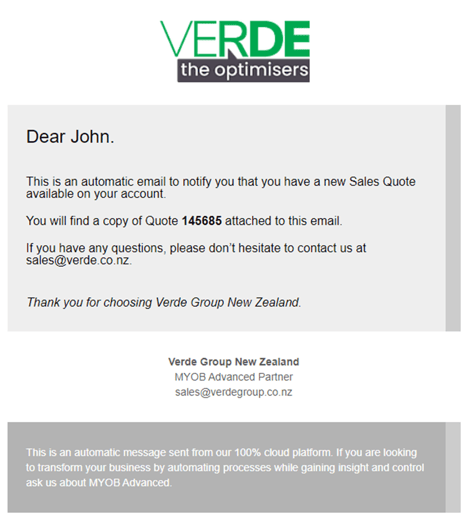
Here is how you can do it.
MYOB Advanced Notification Template Editor
MYOB Advanced includes an integrated rich text editor for templates. Both screens SM204003 and SM205040 use the same editor, and it supports the use of special field tags that are placeholders to be filled with values from the related documents before being sent.
Content can be edited in a visual WYSIWYG mode, but you can switch to an HTML mode to edit the markup directly. If you would like to create good-looking emails, you need to use HTML.
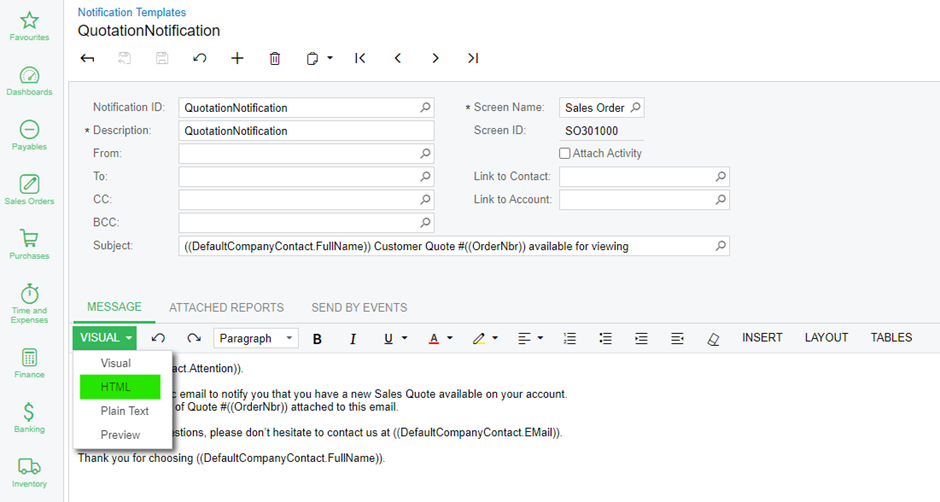
The MYOB Advanced integrated HTML editor is user-friendly when it comes to making basic adjustments such as altering font size or adding color. However, if you require more advanced capabilities such as creating professional templates from scratch or developing complex email formats that are both responsive and compatible with various email readers, using the editor can become challenging.
If we could find a way to easily design our templates and build the required HTML markup, we could just paste it into the MYOB Advanced editor.
Email-building frameworks are a solution to the challenges presented by the limitations of an integrated HTML editor. Typically, email template frameworks operate on a basic principle: they offer a fundamental structure that simplifies the process of designing email content through straightforward proprietary definitions of blocks and columns. Subsequently, these frameworks generate the necessary HTML markup. Given the diverse and non-standardised nature of email clients, these frameworks utilize various techniques to ensure that the final product appears as similar as possible to the original design, regardless of the email reader used.
There are several tools out there that we can use to design and build email templates. Currently, we are using mjml (by MailJet). Other similar tools we have tested are Foundation for Emails (by Zurb) and HEML (by Sparkpost).
The fastest way to start building a template is to install the MJML native application. This tool includes a live preview of the template as you work on it.
The main idea of the framework is to build templates from simple building blocks. The main blocks are: mj-body, mj-section and mj-column. Content then comes as different types of components where the most common one is mj-text. For more references, you can check mjml’s documentation.
If you add images, you need to use the full URL because they need to be accessible from the email client. MYOB Advanced won’t attach them to the email.
When building the email content, you can add placeholder variables depending on the MYOB Advanced screen related to the template. To get the name of the data field, you can use the INSERT->DATAFIELD command. This shows a list of related DACs and available fields.
Placeholders use the format ((ViewName.Field)), where ViewName is the name of the View (DAC) in the MYOB Advanced Graph and Field is the DAC field whose value we need to use.
Here is my final base notification template using mjml:
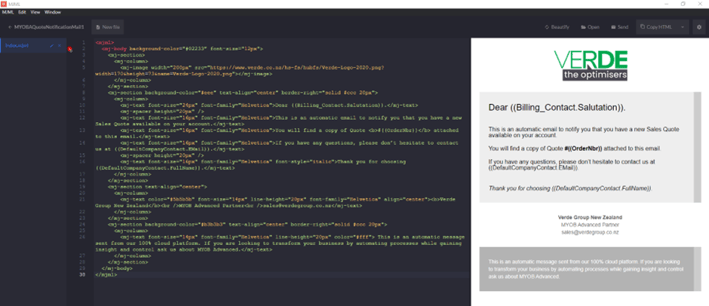
(you can access a copy of my code below)
Once you are happy with the result, you can save the generated HTML or copy it to memory.
Finally, just paste it inside the HTML view of the template editor.
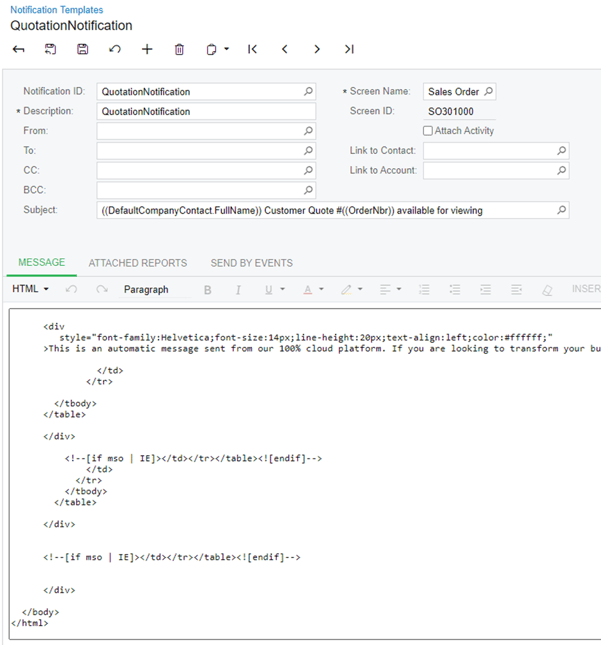
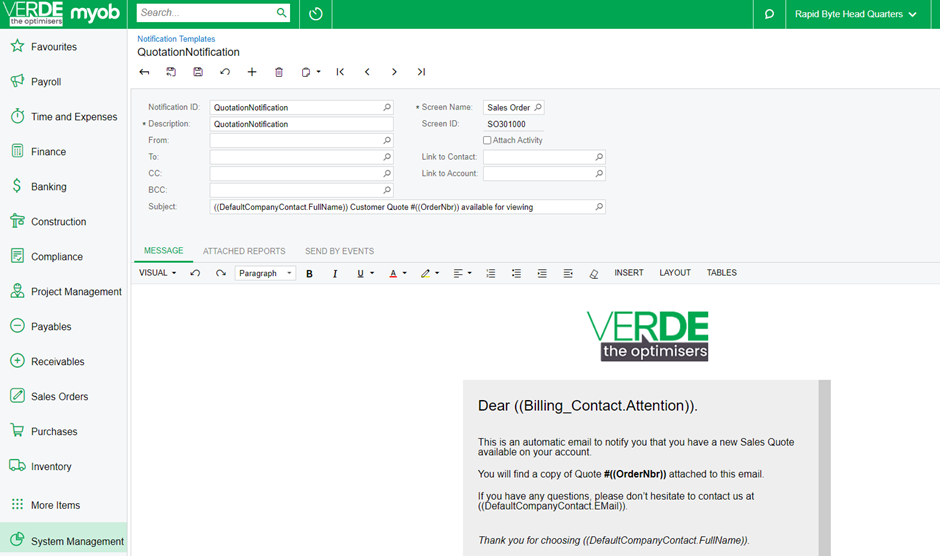
While MYOB Advanced offers impressive features for process automation and notifications, there are times when using external tools can simplify a developer's workflow. As the principle of Occam's Razor states, the simplest solution is often the best or most appropriate one.
Enhancing the design of email templates can significantly improve the overall experience of users and customers by providing more visually appealing and functional notifications within MYOB Advanced.

